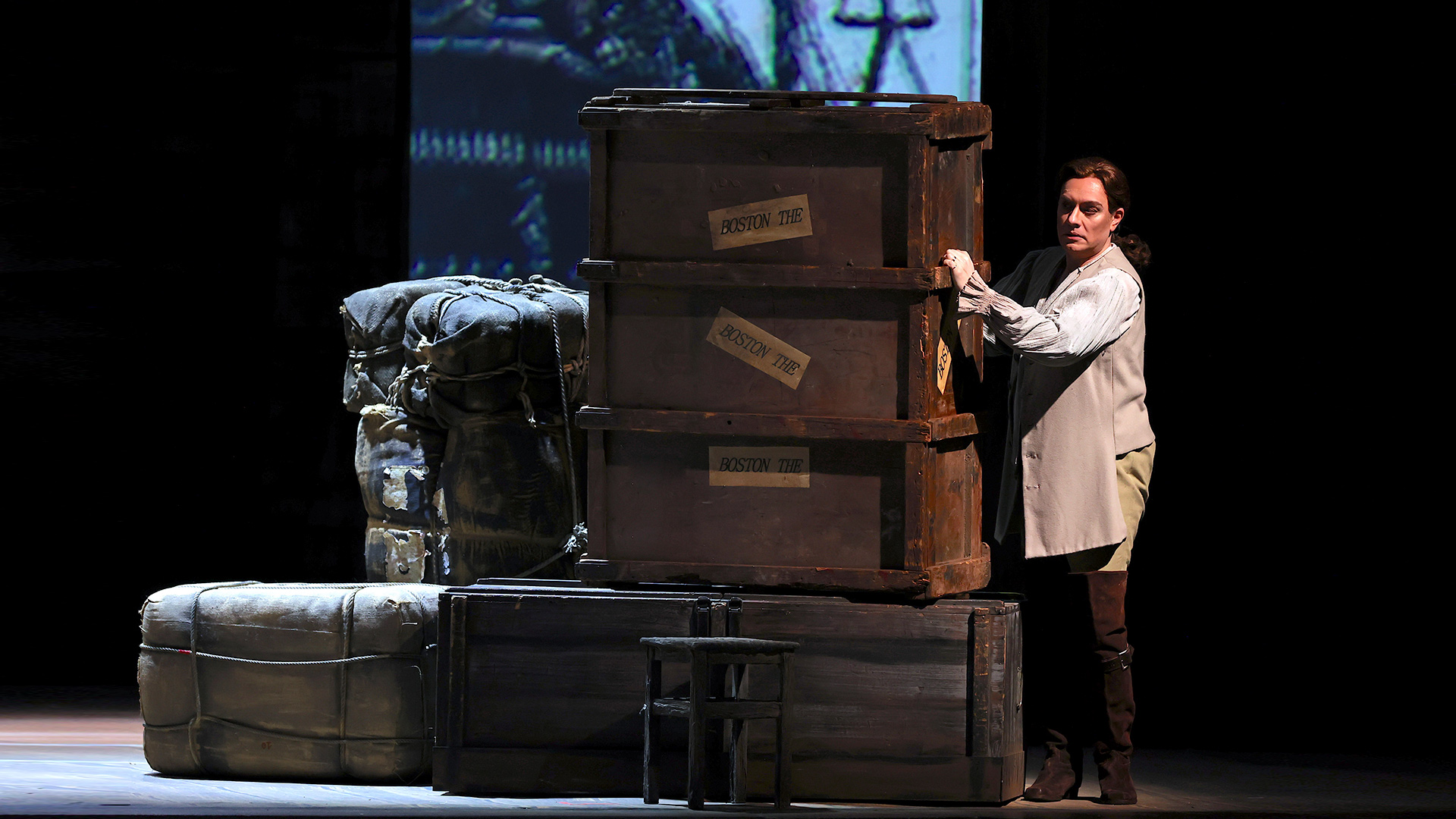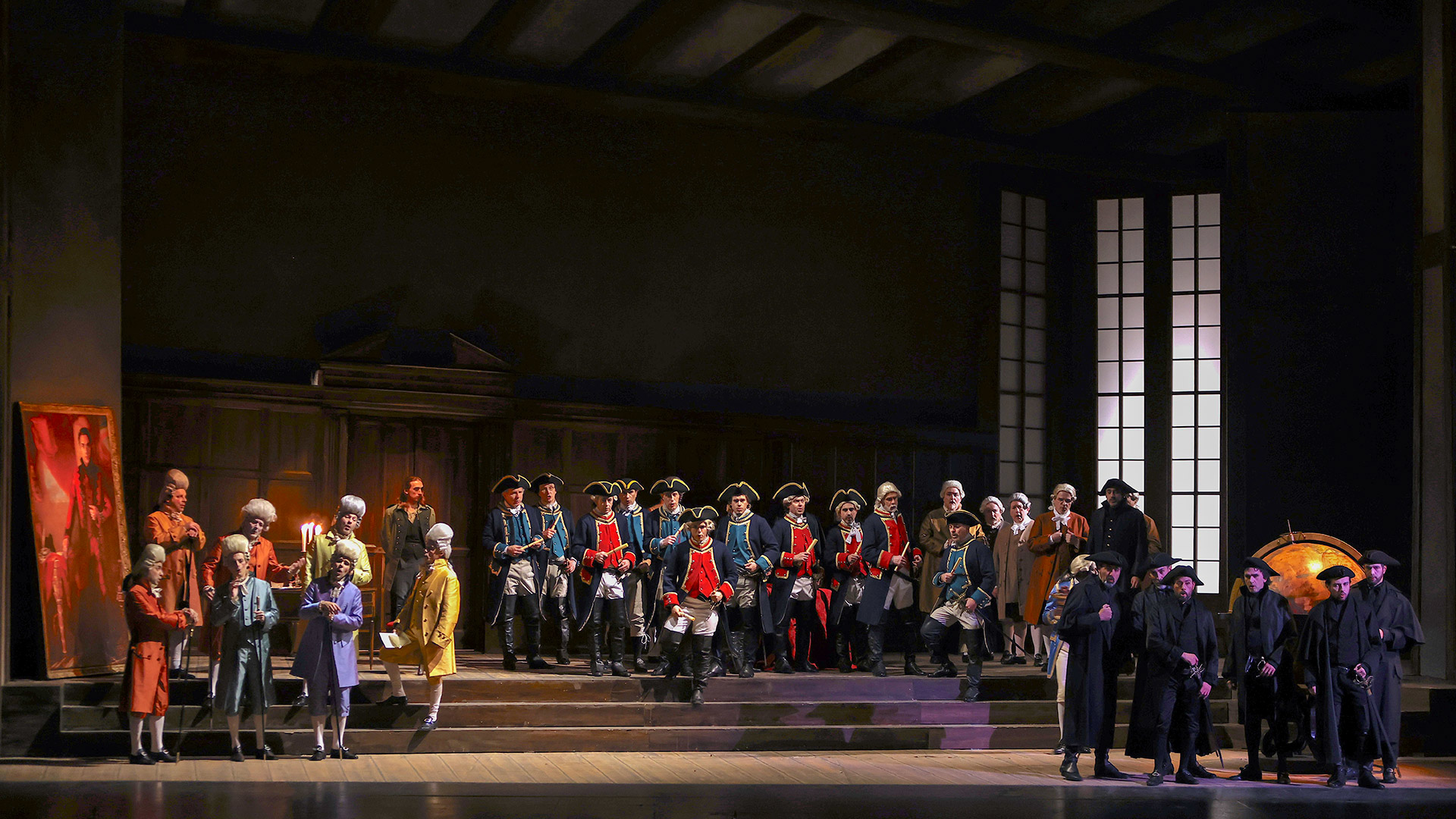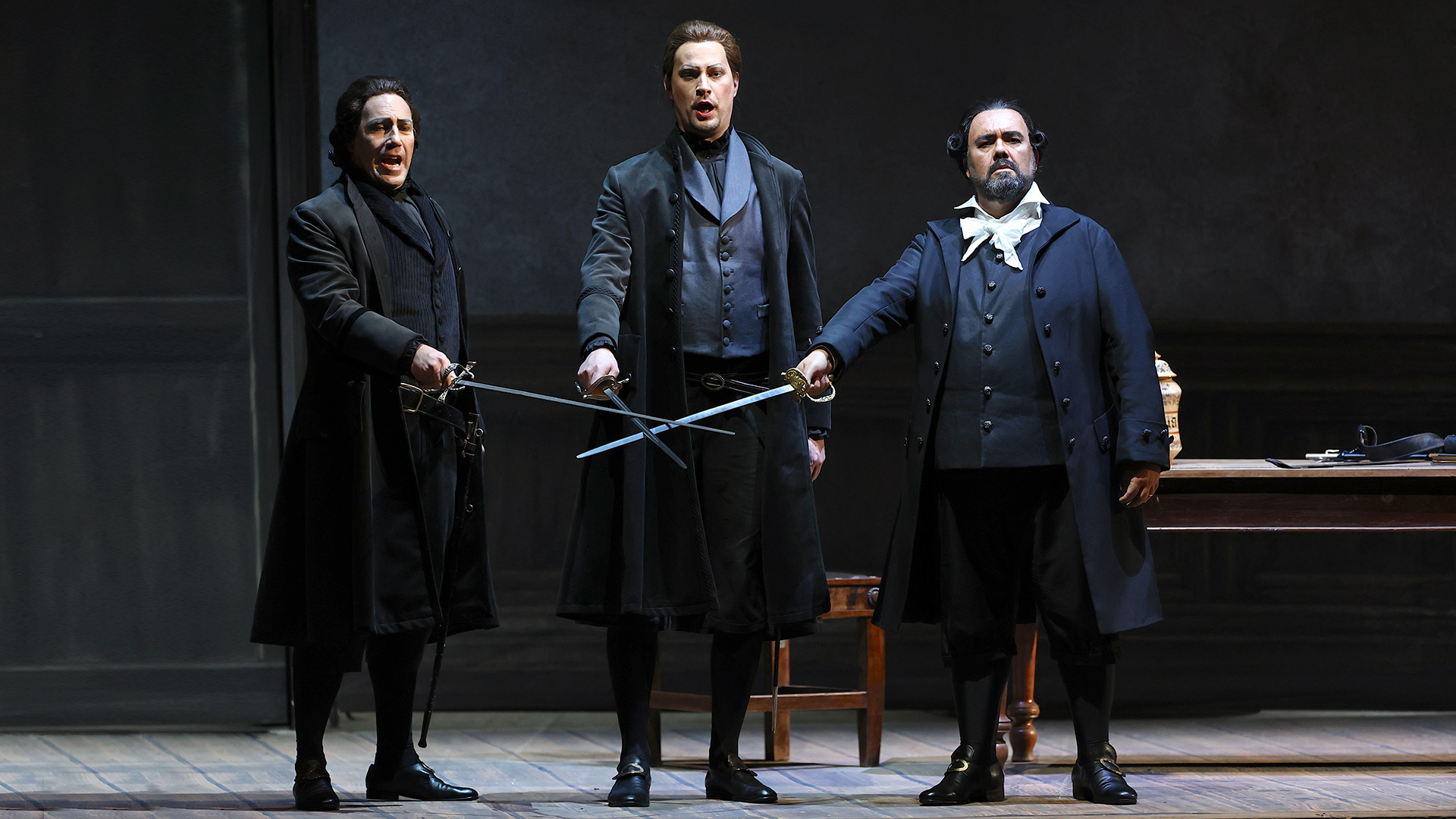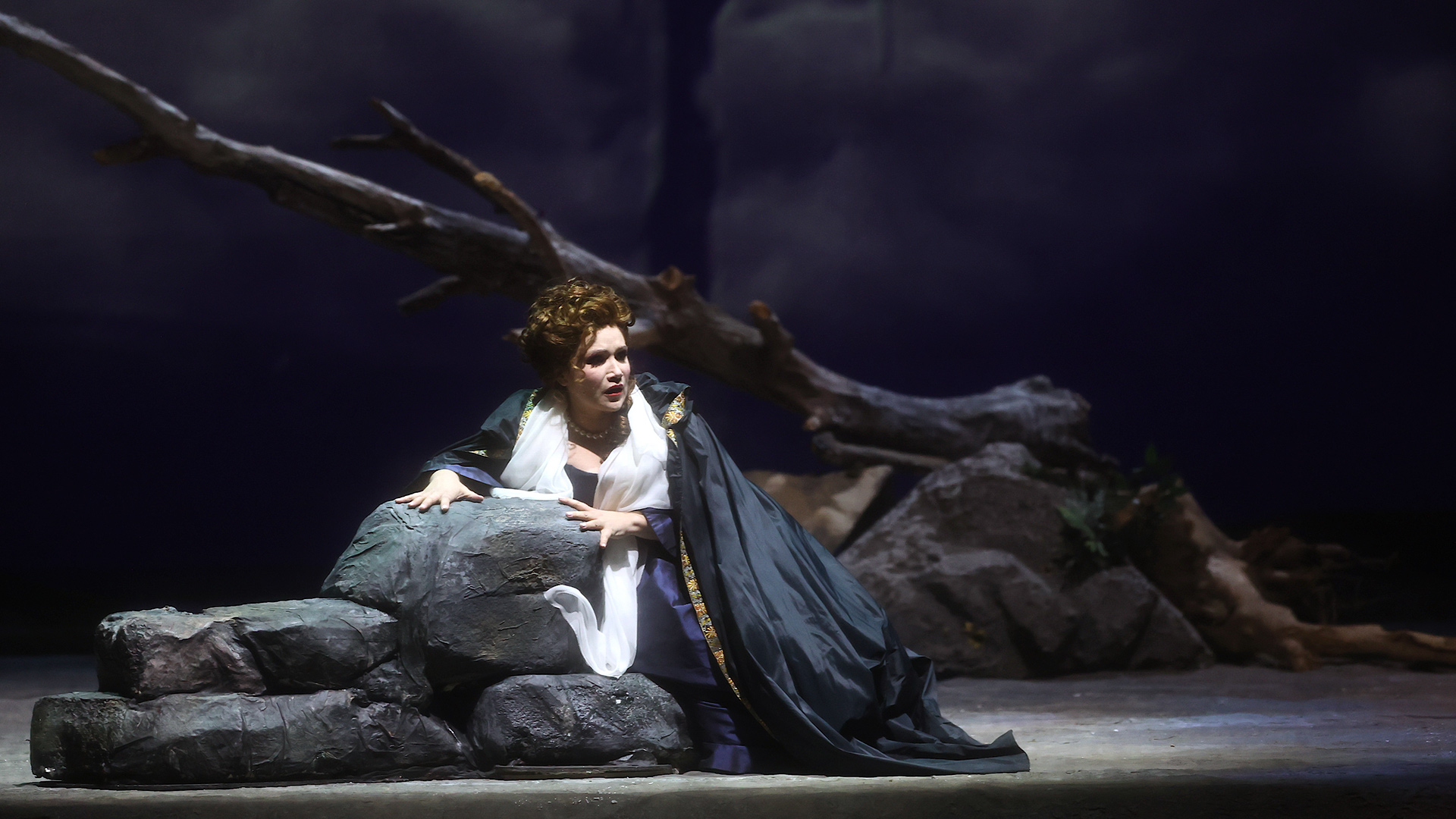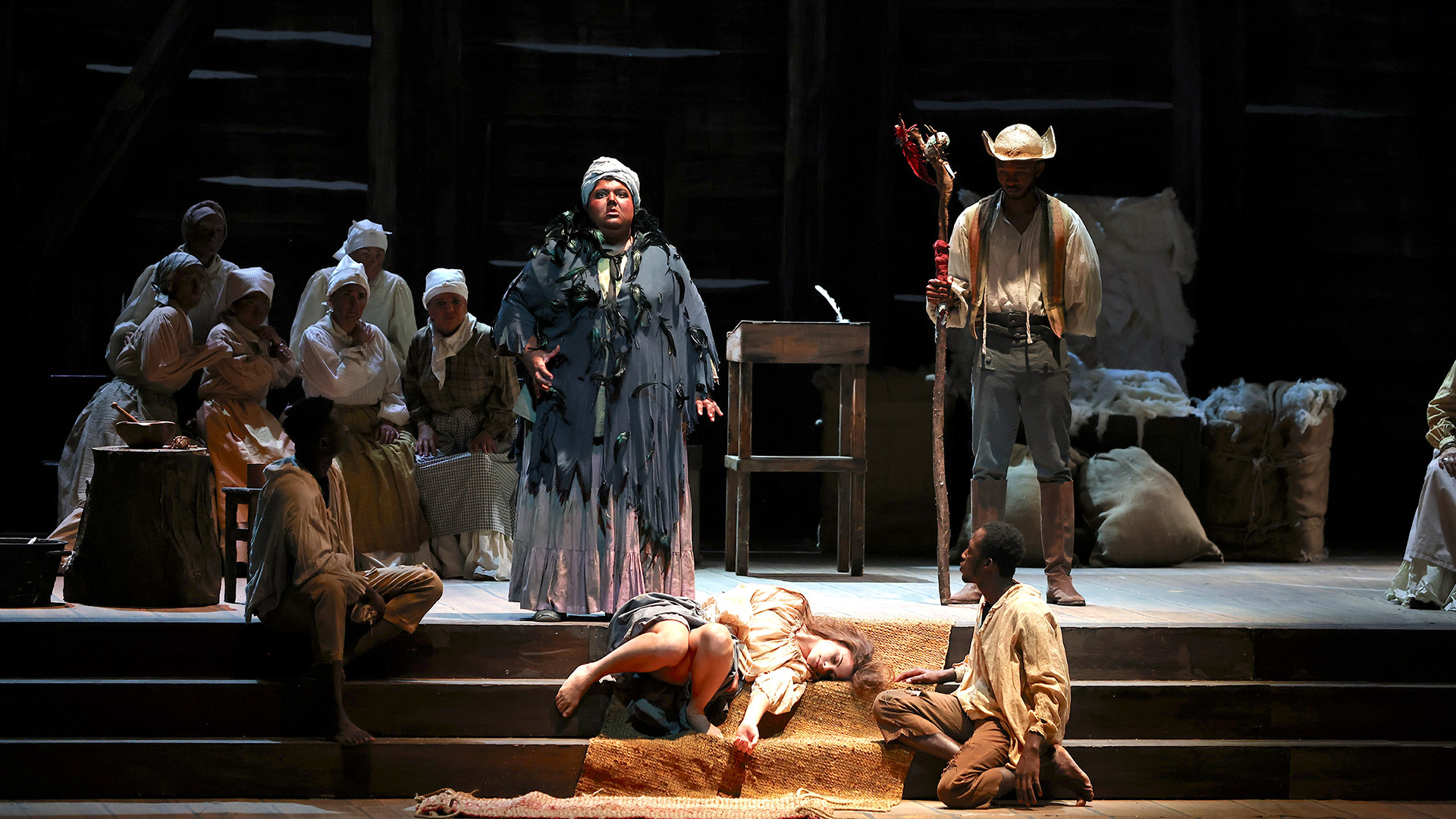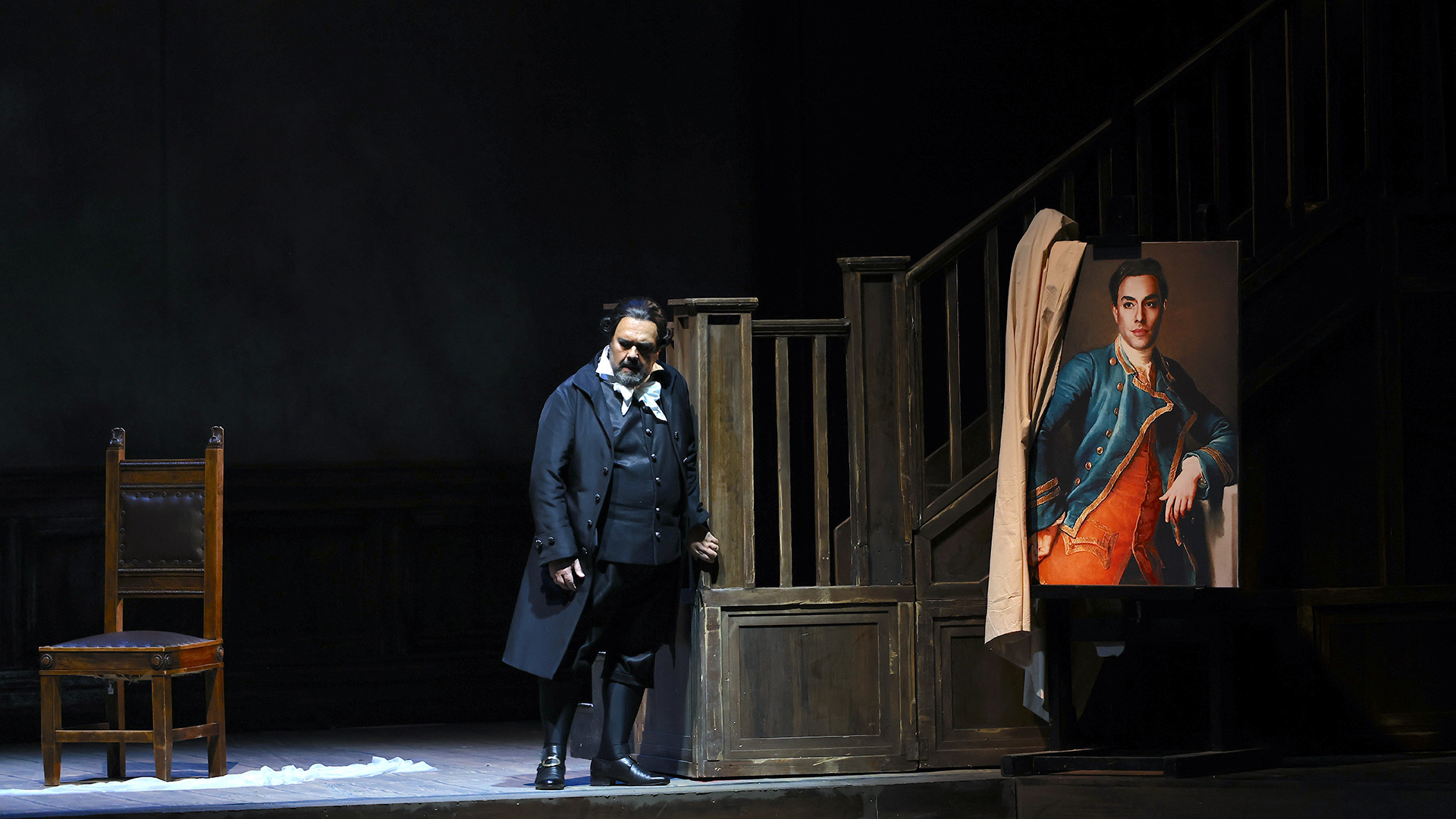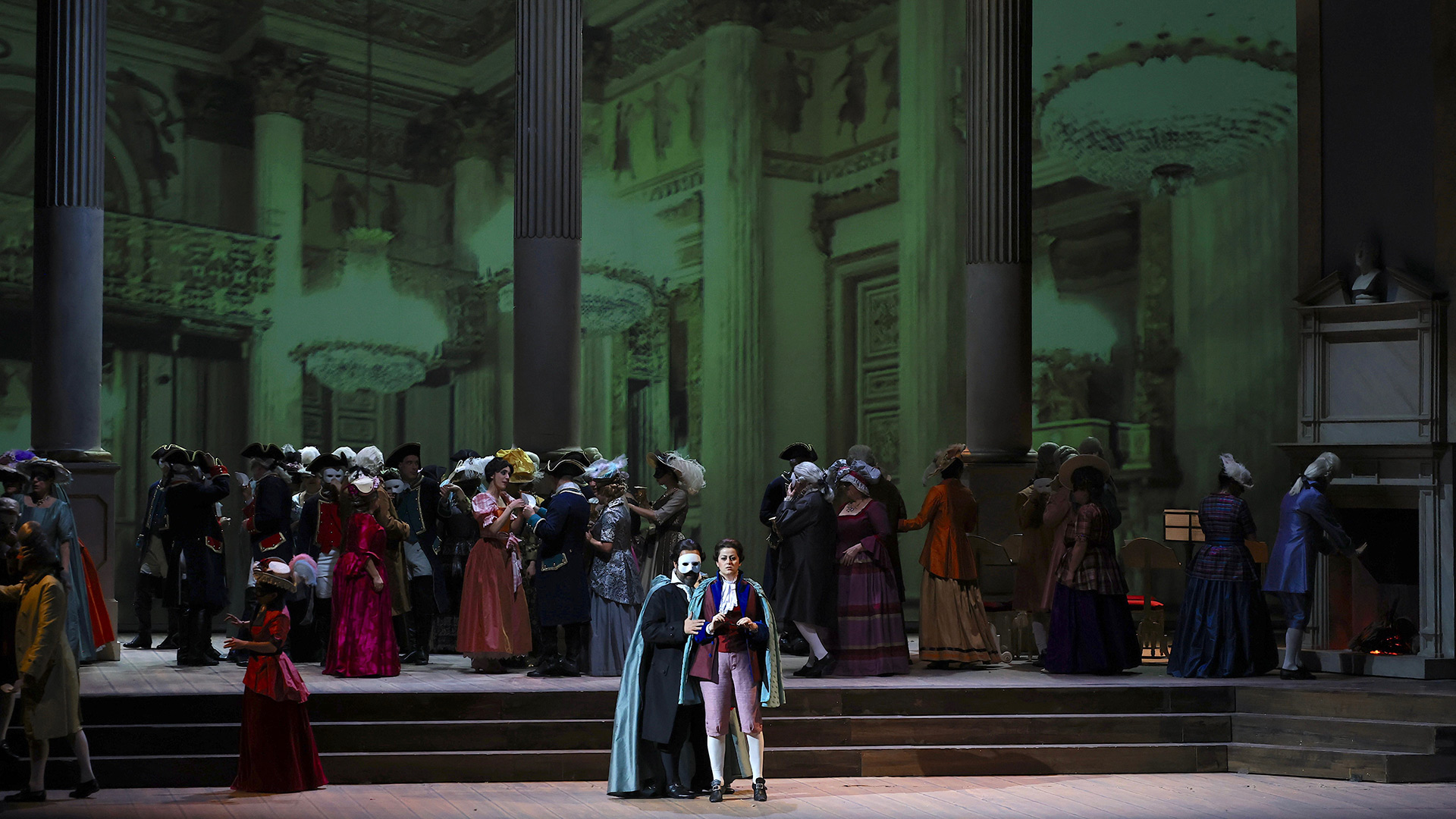Opera in three acts
Music by Giuseppe Verdi
Libretto by Antonio Somma, from Gustave III, ou Le Bal masqué by Eugène Scribe
PLAYBILL
Amelia
Carmen Giannattasio
Maria Teresa Leva (28, 4)
Riccardo
Francesco Meli
Angelo Villari (28, 4)
Renato
Roberto de Candia
Mansoo Kim (28, 4)
Ulrica
Maria Ermolaeva
Agostina Smimmero (29, 3)
Oscar
Anna Maria Sarra
Ksenia Bomarsi (28, 4)
Silvano
Marco Camastra
Samuel
John Paul Huckle
Tom
Romano Dal Zovo
Un giudice
Giuliano Petouchoff
Unservo d’Amelia
Claudio Isoardi
Conductor
and orchestrator
Donato Renzetti
Director
Leo Nucci
ripresa da Salvo Piro
Scenic designer
Carlo Centolavigna
Costume designer
Artemio Cabassi
Lighting designer
Claudio Schmid
Staging
Fondazione Teatri di Piacenza
Teatro Alighieri di Ravenna
Teatro Comunale di Ferrara
Orchestra, chorus and Technicians
of Opera Carlo Felice Genova
chorusmaster
Claudio Marino Moretti
TITLE SPONSOR

Staging director
Luciano Novelli
Stage musical director
Simone Ori
Répétiteurs
Sirio Restani, Antonella Poli
Stage musical assistants
Andrea Gastaldo, Anna Maria Pascarella
Other Choir Master
Patrizia Priarone
Lighting Master
Stefania Zanesco
Supertitle Master
Bernardo Pellegrini
Assistant Conductor
Davide Massiglia
Head of musical archives
Simone Brizio
Scenic director
Alessandro Pastorino
Vice scenic director>
Giorgio Agostini
Consolle supervisor
Andrea Musenich
Stage technicians foreman
Gianni Cois
Electrician foreman
Daniele Malcontenti
Tooling foreman
Tiziano Baradel
Audio/video foreman
Walter Ivaldi
Head of tailoring, shoemaking,
make-up and wigs
Elena Pirino
Make-up and hair co-ordinator
Raul Ivaldi
Scenic and costume design
Fondazione Teatri di Piacenza
Teatro Alighieri di Ravenna
Teatro Comunale di Ferrara
Equipment
Fondazione Teatri di Piacenza
Teatro Alighieri di Ravenna
Teatro Comunale di Ferrara e Rancati
Footwear
Epoca
Wigs
Mario Audello
Supertitles
Prescott Studio
L’opera in breve
by Ludovica Gelpi
Verdi’s first drafting idea for Un ballo in maschera came in 1857. The composer had seen and liked Daniel Auber’s “French drama” Gustave III ou Le bal masqué with a libretto by Eugène Scribe, first performed at the Paris Opera in 1833, and decided to make his own version. Previously, the drama had been revived, under the title Il reggente, by Saverio Mercadante and Salvadore Cammarano in 1843.
As was often the case in those years, the chosen subject, written by Verdi with librettist Antonio Somma, was not approved by the censors. Verdi was under contract with the Teatro San Carlo in Naples, and it was precisely as a result of repeated and consistent requests for changes that the contract was dissolved, not without consequences that brought the two parties to court, and for which the composer did not conceal bitter disappointment: “A Maestro who respects his art and himself could not and should not disgrace himself by accepting as the subject of a music, written on a very different plane, such oddities that tamper with the most obvious principles of drama and vituperate the artist’s conscience». Later, Verdi decided to propose the opera in Rome, partly out of spite, given its proximity to Naples, although due to papal censorship several elements of the original still had to be changed. Thus, Gustav III King of Sweden became first a duke and then a governor, under the name of Richard; regarding the setting Antonio Somma suggested 12th-century Pomerania, a proposal not accepted by Verdi, who chose instead the city of Boston in the latter part of the 18th century, at the height of the American War of Independence. Un ballo in maschera was first staged at the Teatro Apollo in Rome for Carnival on February 17, 1859. Several aspects of Gustav III’s historical story were retained, and the new setting proved effective, exotic and fascinating. Verdi also wanted to precisely outline the guiding elements for the staging, which was decidedly unusual, with the Stage layout for the opera ‘Un ballo in maschera,’ written with stage director Giuseppe Cencetti, taking the first performance as a starting point. Such special attention proved necessary because of the very nature of some scenes, in which music and stage action become one.
There are several aspects of this work that depart from earlier production and instead anticipate the style of recent years, so much so that Un ballo in maschera could be called an ‘experimental’ work. The opening Prelude anticipates the themes that will return to develop throughout the three acts, and as a whole no single dramatic genre is defined. Varied, tragic, comic, brilliant hues coexist, reflected in the many facets of the characters: Riccardo, a man of complex emotionality, on the one hand a capable and appreciated politician, on the other a fragile man, tormented by his love for his brotherly friend’s wife; Amelia, who would like to love her husband but is overwhelmed by her feelings for Riccardo; Renato, who transfigured by the desire for revenge goes from affection to the deepest hatred; and again the almost caricatured Samuel and Tom, bumbling but stubborn conspirators, and the pageboy Oscar, a character en travesti, which owes much to the French operatic tradition. In the finale of Act III, in particular, comic and serious, lightness and tragedy, merge, and amidst the music of the dance party and the dancing guests, the protagonists reach the dramatic climax of the story, in their “night of horror.”
